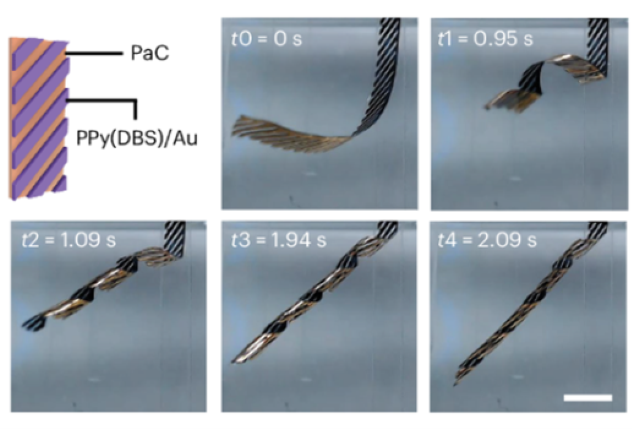A step towards the introduction of advanced bioelectronic interfaces and the monitoring of neural activity using minimally invasive systems. The article was published it in the journal Nature Materials by an international team of researchers, including scientists from the Department of Physics and Astronomy 'Augusto Righi'at the University of Bologna.
Researchers have developed and successfully tested bioelectronic microfilms that, when activated by tiny electrical impulses, can wrap themselves around nerves like little bracelets. The microfilm contains dozens of high-resolution microelectrodes that can be used to monitor and control nerve impulses.
"Peripheral neural interfaces are increasingly being used in the field of bioelectronic medicine, for example to treat neuropathic pain, movement disorders, metabolic diseases or even to control prosthetic limbs," explains Beatrice Fraboni, professor at the Department of Physics and Astronomy 'Augusto Righi' at the University of Bologna, one the authors of the study. "Cuff systems, which wrap around the nerve, are among the most interesting in this respect because they are less invasive. However, they currently require complex surgical procedures, suffer from mechanical and connection problems, and cannot be repositioned once in place".
To overcome these limitations, the research team came up with the idea of using organic mixed ionic-electronic conductors (OMIEC): a type of material whose volume expansion or contraction can be controlled by low-voltage pulses.
"Using this type of material, we have been able to integrate electrochemical actuators onto very thin bioelectronic films, creating a new type of cuff electrode that allows neural interfaces to be created with minimally invasive procedures," explains Filippo Bonafè, PhD student at the 'Augusto Righi' Department of Physics and Astronomy, and one of the authors of the study. "The new technology was then successfully tested on animal models: the microfilm is able to create and maintain a solid bioelectronic interface with the sciatic nerve without the need for surgical sutures".
he study was published in the journal Nature Materials under the title 'Electrochemically actuated microelectrodes for minimally invasive peripheral nerve interfaces'. Participating for the University of Bologna were Beatrice Fraboni and Filippo Bonafè from the 'Augusto Righi' Department of Physics and Astronomy.



